Digital Poster
Advanced Genitourinary Imaging
ISMRM & ISMRT Annual Meeting & Exhibition • 10-15 May 2025 • Honolulu, Hawai'i

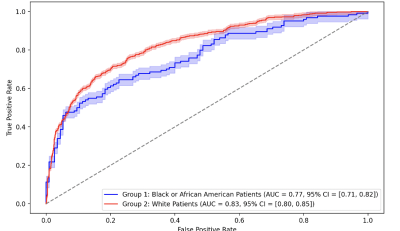 |
Computer Number: 81
2806. Preliminary
Assessment of Racial Disparities in AI-based Prostate Cancer
Detection on bpMRI
P. Johnson, T. Dutt, M. Nayan, A. Tong, H. Chandarana
Bernard and Irene Schwartz Center for Biomedical Imaging, Department of Radiology, New York University Grossman School of Medicine, New York, United States
Impact: This study reveals potential racial bias in an
AI model for Prostate cancer detection on MRI, with lower
predictive accuracy for Black patients. These findings
emphasize the need for further work to ensure equitable AI
algorithms for PCa detection.
|
|
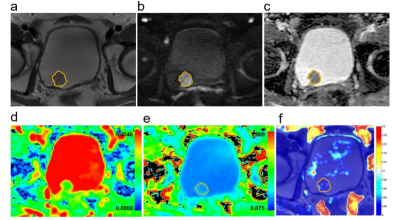 |
Computer Number: 82
2807. Complementary
role of diffusion kurtosis imaging combined with amide proton
transfer-weighted imaging for VI-RADS
F. Wang, X. Xu, L. Chang, L. Du, Y. Xu, D. Pylypenko, T. Xu,
X. Meng, D. Yu, Q. Wang
Qilu Hospital of Shandong University, Jinan city, Shandong province, China
Impact:
Our results demonstrate that the promising potential of this combined model for the preoperative assessment of muscle invasion in BC as well as being a complement to VI-RADS. |
|
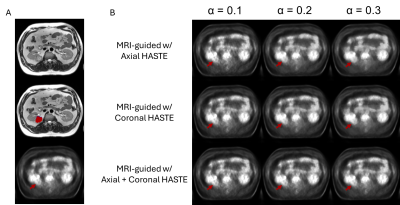 |
Computer Number: 83
2808. MRI-guided
PET reconstruction with adaptive prior strength of renal masses
C. Ying, J. Guo, M. Taherzadeh, C. Musonza, R. Sibley, F.
Arashloo, J. Cabello, Q. Yuan, D. Faul, I. Pedrosa
Siemens Medical Solutions USA Inc., Dallas, United States
Impact: MRI-guided PET reconstruction improves PET image
quality using high-resolution and high soft-tissue contrast
MRI as prior. Our preliminary results demonstrate the
feasibility of MRI-guided PET reconstruction in patients
with renal mass.
|
|
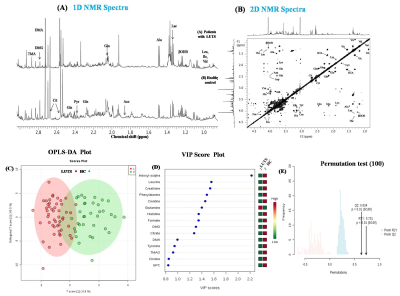 |
Computer Number: 84
2809. NMR-Based
Targeted Metabolic Profiling for Discovery of Urinary Biomarkers
in Male Lower Urinary Tract Symptoms
P. Kumar, V. Kumar, R. Kumar, S. Sharma, S. Thulkar, M. Khan
All India Institute Of Medical Sciences, New Delhi, India
Impact: This study has the potential to significantly
improve LUTS diagnosis by offering a non-invasive
alternative to current methods.
|
|
 |
Computer Number: 85
2810. Analysis
of Deep Learning-based Phase Correction Applied to Single-Shot
rFOV Diffusion Images of the Prostate at 1.5T
E. Milshteyn, S. Ghosh, X. Wang, P. Lan, A. Guidon, N.
Nakrour, M. Harisinghani, R. Cochran
GE HealthCare, Boston, United States
Impact: Improved 1.5T diffusion image quality using DL
with phase correction may improve prostate cancer diagnosis
and staging. Further work is needed to determine if this
technology provides similar improvements image at 3T and may
be translated to other sequences.
|
|
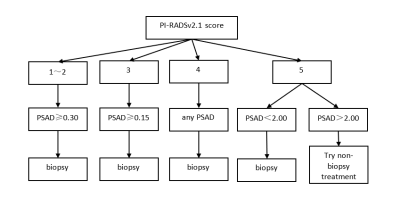 |
Computer Number: 86
2811. Clinical
Utility of the PI-RADSv2.1 Combined with PSA Parmeters for
Prostate Biopsy Indication
Y. Li, Y. Zeng, S. Wang, Y. Zhu
The First People's Hospital of Yibin, Yibin, China
Impact: By integrating PI-RADS v2.1 scores with PSAD,
this study offers a validated method to reduce unnecessary
prostate biopsies by 40%, enhancing patient care and
diagnostic precision for clinically significant prostate
cancer.
|
|
 |
Computer Number: 87
2812. Development
and validation of a preoperative MRI habitat radiomics model to
predict variant histology in bladder cancer
L. Kong, Y. Qin, Q. Cai, K. Zhang, X. Zhao, Y. Guo, H. Wang
The First Affiliated Hospital, Sun Yat-Sen University, Guangzhou, China
Impact: The proposed VHRiS model represents a promising
and robust tool forto identifying variant histologyVH,
offering providing valuable insights into patient prognosis
within the microtumoral environment and suggesting
indicating potential benefit for precision clinical
decision-making guidance in patients with bladder cancer.
|
|
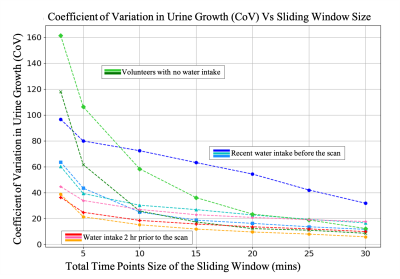 |
Computer Number: 88
2813. MR
Hydrometric Urine Accumulation Monitoring with Automated
Segmentation: Initial Feasibility and Stability Assessment of
Clinical Protocol
M. P. Thein, C. Zhu, X. He, S. Muthukannan, K. Gupta, Y.
Wang, K. Kawaji, M. Prince
Illinois Institute of Technology , Chicago, United States
Impact: This study assists radiologists in assessing
treatment efficacy in ADPKD through precise urine generation
tracking, supported by the reproducible optimized protocol
establishing a 25-30 minute timeframe for stable
measurements.
|
|
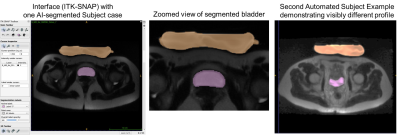 |
Computer Number: 89
2814. Towards
Dynamic MR Hydrometry Time-Volume Filling Curve Analysis of the
Urinary Bladder Filling: Initial Feasibility
M. P. Thein, C. Zhu, X. He, K. Gupta, D. Tailor, S.
Muthukannan, Y. Wang, M. Prince, K. Kawaji
Illinois Institute of Technology , Chicago, United States
Impact: Dynamic MR Hydrometry enabled by AI-enabled
automated segmentation is proposed. Urine accmulation, which
is both non-trivial and known to be highly variable, was
successfully characerized in this initial feasibility work
towards dynamic assessments with time-volume filling curve
analysis.
|
|
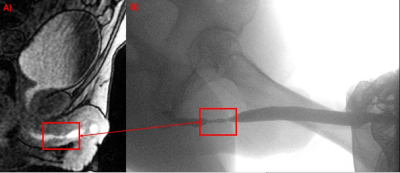 |
Computer Number: 90
2815. Coarctation
of the urethra? A pilot study of MRI based computational fluid
dynamic study of urethral biomechanics in urethral stricture
E. Turner, J. Gonzalez-Pereira, M. Taychert, M. Grimes, A.
Roldan-Alzate
University of Wisconsin - Madison, Madison, United States
Impact: USD patients are currently restricted in which
methods can be employed to evaluate their bladder/urethral
function. This study develops a non-invasive MRI based CFD
tool to rigorously evaluate the LUT in USD patients.
|
|
|
Computer Number:
2816. WITHDRAWN |
||
 |
Computer Number: 91
2817. Uro-Dynamic
MRI Reveals Biphasic Behavior of the Bladder During Voiding
J. Gonzalez-Pereira, E. Turner, H. Sargeant, M. Grimes, W.
Bushman, A. Roldan-Alzate
University of Wisconsin-Madison, Madison, United States
Impact: Uro-Dynamic MRI reveals a biphasic behavior of
bladder during voiding as measured by sphericity index.
Correlation coefficients between anatomical measurements and
urinary flow rates are higher when analyzing the voiding
event as a biphasic event than as a singular event.
|
|
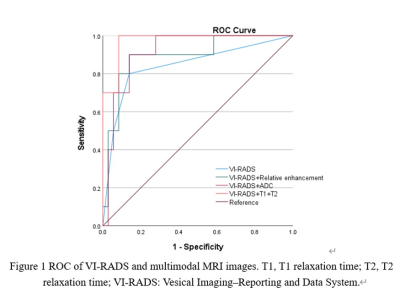 |
Computer Number: 92
2818. Multimodal
Quantitative MRI Combined with Vesical Imaging Reporting and
Data System(VI-RADS)to Evaluate Muscular Invasion of Bladder
Cancer
X. Zhang, X. Chen, C. Xu, J. Guo
Henan Cancer Hospital, Zhengzhou, China
Impact: This correlation among T1/T2/ADC/relative
enhancement and the comparisons of their abilities in
improving the performance of VI-RADS can serve as a guide to
identify which parameter is most helpful and the optimal
sequences plan for a certain patient.
|
|
 |
Computer Number: 93
2819. Analysis
of Magnetic Resonance Elastography Prostate Biomarkers in
Healthy and Lower Urinary Tract Symptoms Subjects
C. Johnson, J. P. Gonzalez-Pereira, W. Ricke, M. Grimes, T.
Hall, Y. Jiang, V. Gulani, A. Roldan-Alzate, C. Brace, S.
Wells
University of Wisconsin-Madison, Madison, United States
Impact: pMRE is a novel, noninvasive imaging technique
that can show spatial heterogeneity of the prostate and
increased prostate stiffness with increasing severity of
LUTS, demonstrating its potential as a useful biomarker in
identifying phenotypes of LUTS.
|
|
 |
Computer Number: 94
2820. MRE-derived
stiffness of the kidney in Chronic Kidney Disease: Association
with estimated glomerular filtration rate and MR relaxation time
C. Bradley, C. Buchanan, M. Craig, M. Taal, N. Selby, E.
Cox, S. Francis
University of Nottingham, Nottingham, United Kingdom
Impact: MRE stiffness of the kidneys in conjunction with
other MRI parameters may provide a more comprehensive
assessment of the underlying structure, function and
pathology as inflammation and fibrosis increase in patients
with chronic kidney disease.
|
The International Society for Magnetic Resonance in Medicine is accredited by the Accreditation Council for Continuing Medical Education to provide continuing medical education for physicians.